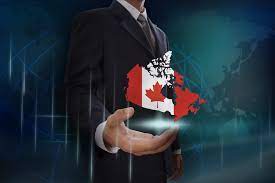
CFD trading has become increasingly popular in recent years as more and more people look to alternative investment options. CFD stands for “contract for difference”, and essentially allows traders to speculate on the price movements of various assets without actually owning the assets themselves. But how does it work and what do beginners need to know before diving into cfd trading? In this guide, we’ll break it all down.
Understanding the Basics – As mentioned, CFDs are contracts that are based on the price movements of assets like currencies, stocks, commodities, and more. When you buy a CFD, you’re essentially taking a position on whether the price of that asset will go up or down. If you’re right, you’ll make a profit, but if you’re wrong, you’ll make a loss. It’s important to note that CFDs are not actual investments in the assets themselves, but rather agreements between the trader and the broker.
Choosing a Broker – Before you can start trading CFDs, you’ll need to find a reputable broker that offers the option. Look for a broker that is licensed, regulated, and has a good reputation in the industry. You’ll also want to find a broker that offers a wide range of assets to trade, competitive spreads and fees, and easy-to-use trading platforms. Take your time to research and compare different brokers before making a decision.
Managing Your Risks – Like any form of trading, CFDs come with risks, and it’s important to understand and manage those risks. One way to do this is by setting stop-loss orders that automatically close out your trades if the price of an asset falls below a certain point. You can also manage your risks by using a demo account to practice trading before investing real money, and by only investing what you can afford to lose.
Analyzing the Markets – Successful CFD traders rely on market analysis to make informed trading decisions. This involves analyzing charts and technical indicators to identify patterns and trends, as well as keeping up-to-date with news and events that could impact the markets. There are many different tools and resources available to help with market analysis, so it’s worth taking the time to learn and explore what works best for you.
Developing a Trading Strategy – Finally, it’s important to have a trading strategy in place that outlines your goals, risk tolerance, and entry and exit points for trades. Your strategy should be tailored to your individual needs and style of trading, and should be regularly reviewed and adapted as needed. Remember that there is no one-size-fits-all approach to CFD trading, and what works for one trader may not work for another.
Conclusion:
CFD trading can be a lucrative and exciting form of investment, but it’s important to approach it with caution and a solid understanding of the basics. By choosing a reputable broker, managing your risks, analyzing the markets, and developing a trading strategy, you can increase your chances of success in this competitive market. Remember to always invest responsibly and never risk more than you can afford to lose. Good luck!

